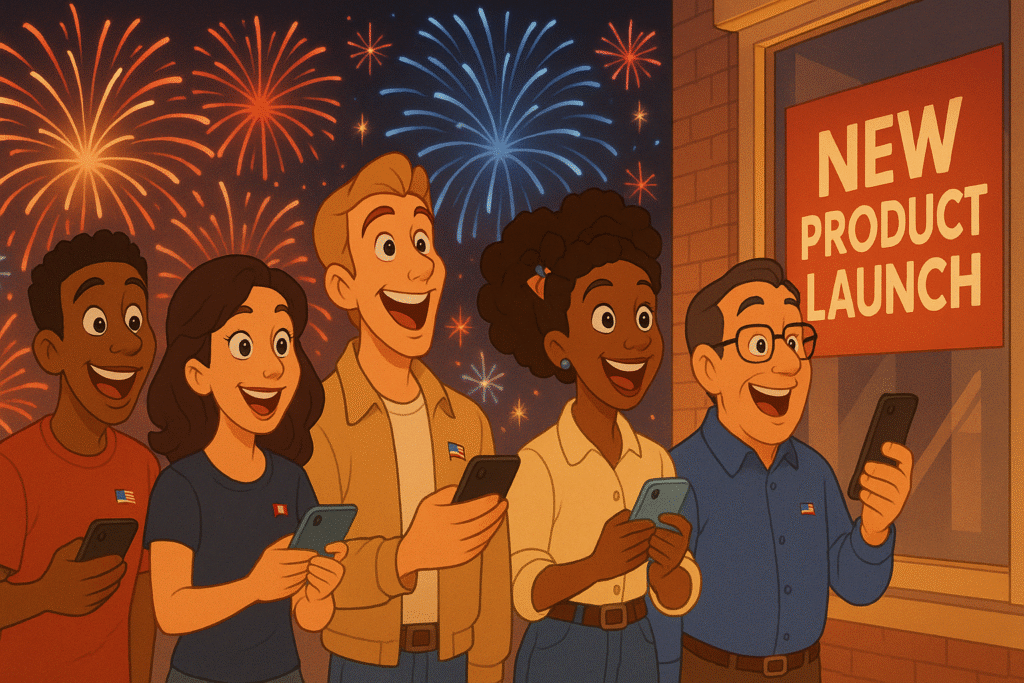
Happy Fourth of July to all my American readers!
As a Canadian experiencing your independence day from the sidelines, I’m reflecting on something I’ve observed working with American product makers for three decades.
There’s a uniquely American trait that goes far beyond patriotic spirit:
It’s how differently American consumers approach new products compared to … well, pretty much everywhere else in the world.
I don’t think an American could see it as clearly as someone outside your borders does.
Last week, I was on a call with an innovator in Oregon who casually mentioned she’d pre-ordered three different products that probably won’t even ship until next year. “I like being first to try new stuff,” she said, as if this was the most natural thing in the world.
Outside the US, that level of early-adoption enthusiasm can be much rarer.
We tend to wait, watch, and see how things work out for other people first.
But American consumers?
They’ll line up overnight for the newest smartphone or game console.
They’ll back Kickstarter campaigns for products that exist only as 3D-printed prototypes.
They’ll download apps based on a thirty-second video and give their credit card to companies they’ve never heard of.
What may seem reckless to non-Americans is a cultural superpower.
The American market’s sheer size means early adopters there can fully make or break products before they ever reach global markets. Other countries can hardly imagine that.
With 330 million consumers and massive spending power, American early adoption creates instant validation that the rest of the world pays attention to.
When Americans embrace something widely, it becomes globally relevant almost immediately.
In I Need That, I discuss how successful products need to reach escape velocity — the point where they sell themselves. American consumers provide the rocket fuel for that launch better than any other market on earth.
Product Payoff: TikTok achieved global domination by conquering American teens. Despite being Chinese-owned, the app’s success in the U.S. market from 2018-2020 created the social proof needed for worldwide adoption.
American influencers drove trends that spread globally, American advertisers validated the platform’s commercial viability, and American media coverage legitimized TikTok as a serious competitor to established platforms.
By 2025, TikTok reached over 1 billion users worldwide, but it was American consumer enthusiasm that provided the credibility and momentum for international expansion.
Test your American readiness: If you’re targeting American consumers from outside (or domestically), assess whether your product can handle their pace of adoption. Can you scale quickly enough to meet demand if early adopters embrace your offering? Do you have customer support and fulfillment systems ready for rapid growth across a complex geographic and socio-economic landscape?
If you’re in other markets, consider how American consumer response might signal global potential.
The American market often serves as the world’s largest focus group — pay attention to what succeeds there.
What product have you seen Americans embrace enthusiastically that later went on to become popular worldwide?
Tap that reply arrow and tell me briefly about your observations on American consumer behavior versus other markets.
Or reach out to my team of product marketing strategists at Graphos Product.
